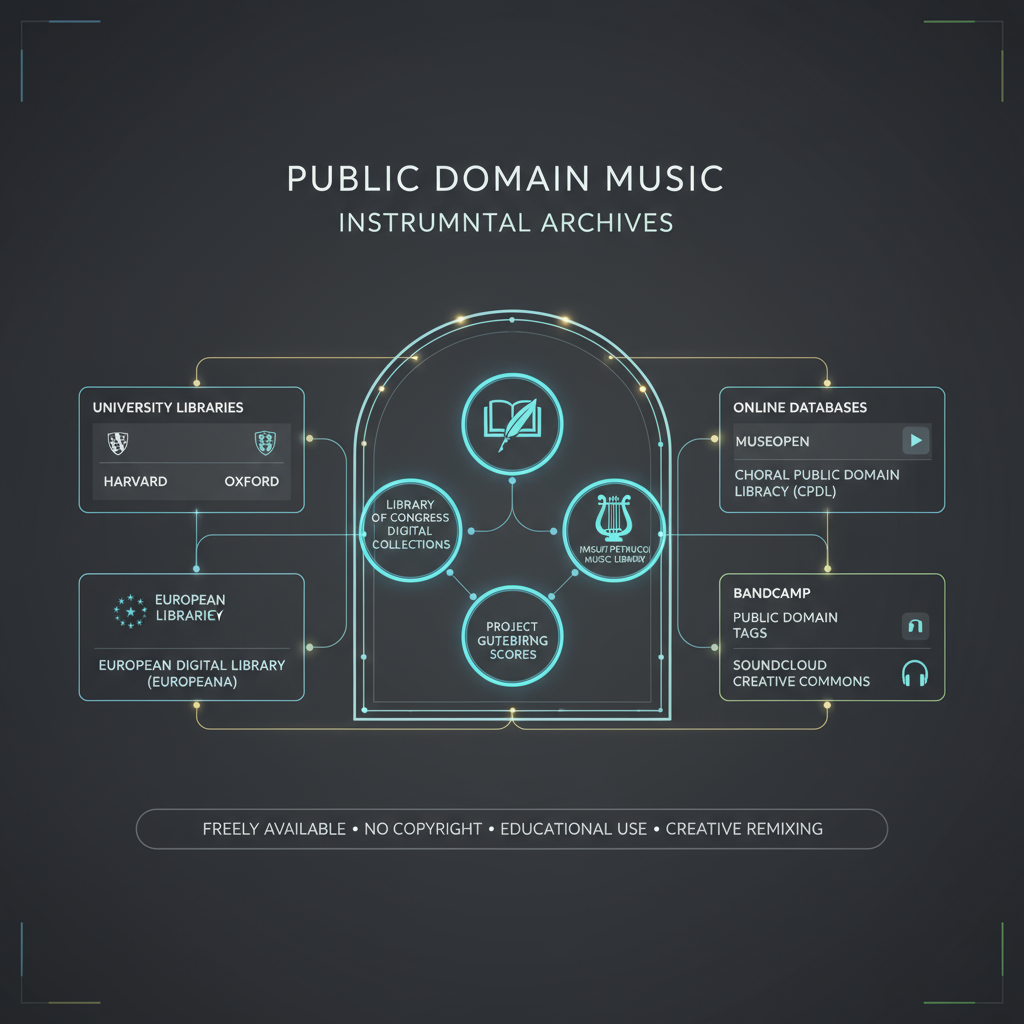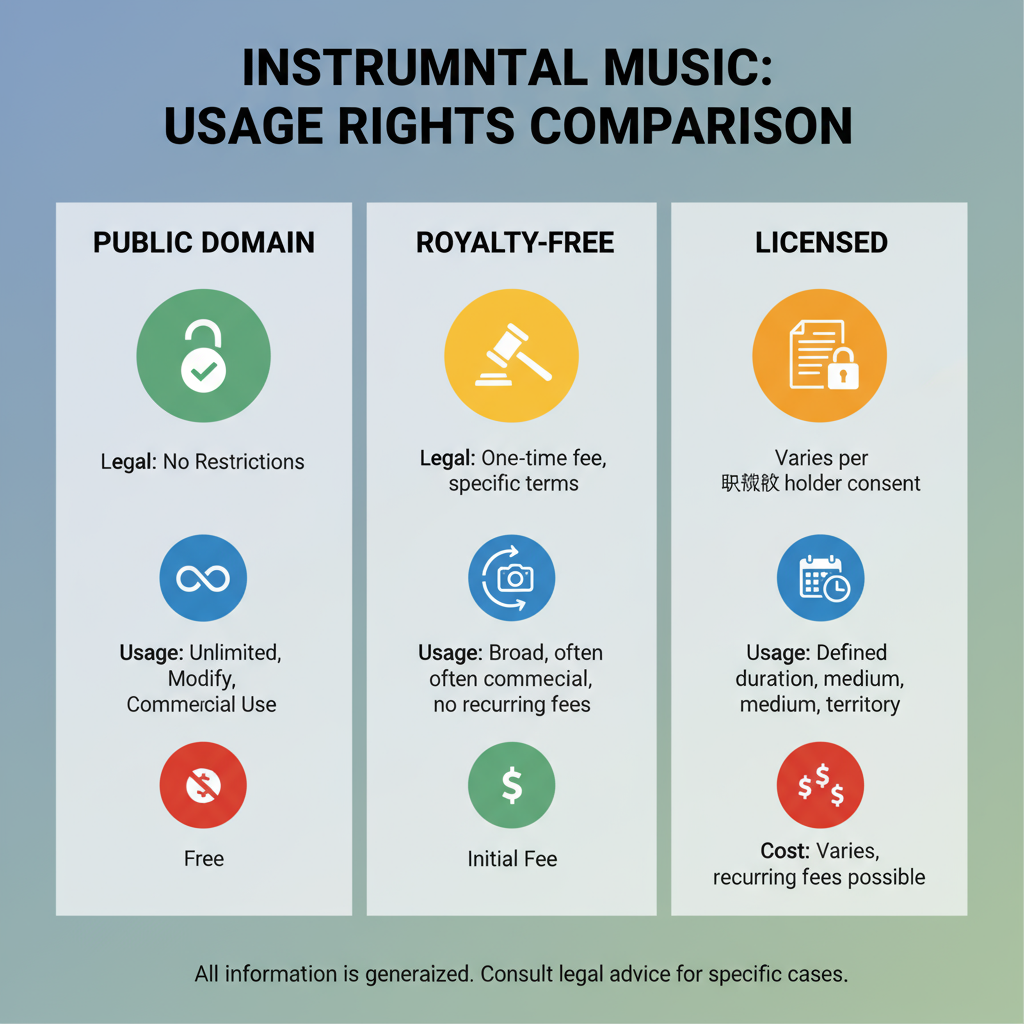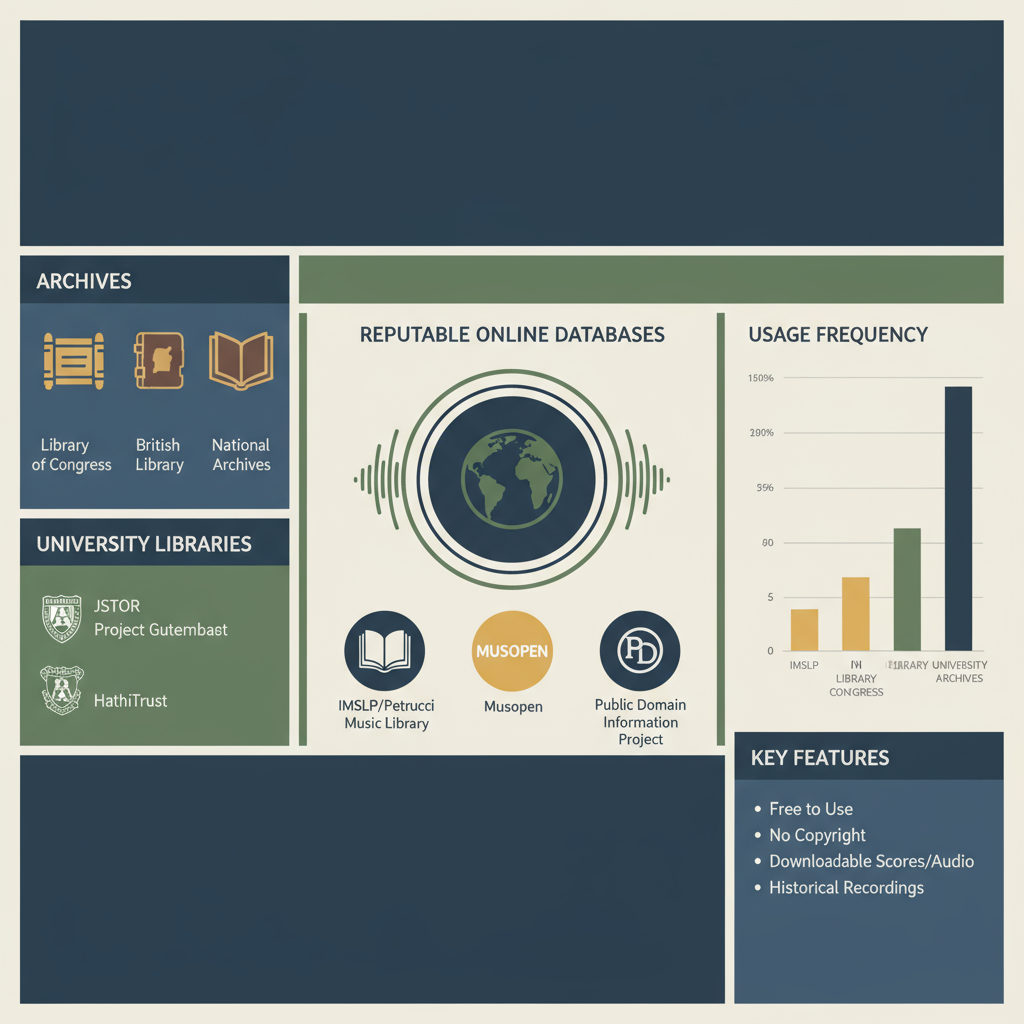Finding and Using Public Domain Instrumental Music
Learn how to find, verify, and use public domain instrumental music legally, including key copyright checks and trusted archives for sourcing.

Understanding Public Domain Instrumental Music
Public domain instrumental music is a valuable resource for creators, educators, and media producers. It refers to compositions and, sometimes, recordings that are not protected by copyright, meaning you can use them freely without licensing fees or legal concerns. While classical and traditional works often fall into the public domain, it’s essential to differentiate between a composition’s copyright status and that of a specific recording to avoid unintentional infringement.
---
Understanding Public Domain in the Context of Instrumental Music
Public domain refers to creative works that are no longer under copyright protection or were never eligible for copyright in the first place. For instrumental music, this means the composition and sometimes the recording are free to use, share, modify, and distribute without asking permission or paying royalties. However, it’s crucial to understand that compositions and recordings can have different copyright statuses.
A classical piece written by Beethoven may be in the public domain as a composition, but a particular recorded performance of it might still be protected by copyright laws depending on the recording date and jurisdiction.

Legal Implications
When a work is in the public domain:
- You can use it for commercial or non-commercial purposes.
- You are free to remix, sample, and re-record without licensing.
- No royalties are due to the original creator or their estate.
However, if you mistakenly use a copyrighted recording thinking it is public domain, you may face infringement issues. Always confirm both the composition and the recording rights.
---
Public Domain vs. Royalty-Free / Licensed Music
It’s easy to confuse public domain instrumental music with royalty-free or other licensed music. They are not the same.
| Category | Ownership | Usage Rights | Cost |
|---|---|---|---|
| Public Domain | No copyright owner; free to use | Unlimited use in all contexts | Free |
| Royalty-Free | Copyright retained by creator | Usage according to license terms | May require one-time fee |
| Licensed Music | Copyright retained | Licensing agreement needed | Recurring fees or per-use costs |
---
Common Sources of Public Domain Instrumental Pieces
Public domain music often comes from:
- Classical compositions: Works by composers like Bach, Mozart, Beethoven.
- Traditional folk: Melodies passed down orally, often without a known single author.
- Cultural heritage pieces: Music that is part of traditional ceremonies and festivals.
Many of these are older than 100 years, which frequently places them outside copyright protection (though check jurisdiction-specific laws).
---
Methods to Research Public Domain Instrumentals
Finding authentic public domain instrumental music requires reputable sources and thorough research.
Archives and Libraries
- Library of Congress: Houses thousands of historic recordings.
- British Library Sound Archive: Wide collection of recorded music.
- National Archives: Country-specific collections.
Reputable Online Databases
- IMSLP (International Music Score Library Project) for sheet music and some recordings.
- Musopen.org for recordings of classical pieces.

---
How to Verify a Work is Truly Public Domain
Verification is critical to avoid legal issues.
Key Points to Check:
- Composition Date
- Check if the composition was published before your jurisdiction’s copyright cutoff (often 70+ years after the composer’s death).
- Recording Date
- Many countries protect recordings separately, usually for 50–70 years after creation.
- Jurisdiction Differences
- Copyright terms differ across countries—a work public in one country might be protected elsewhere.
Simple Verification Process:
- Identify the composer and their death date.
- Find the recording date and performer info.
- Consult government copyright databases.
---
Best Practices for Downloading and Storing Files Safely
When you locate a public domain instrumental to use:
- Download from trusted sources
- Avoid suspicious sites that may host unauthorized content or malware.
- Check file integrity
- Ensure audio files are complete and uncorrupted.
- Keep metadata records
- Store composer, title, recording date, and source info.
- Organize systematically
- Use folders by genre, composer, or project.
- Backup regularly
- Keep copies in cloud storage or external drives.
---
Integrating Public Domain Music into Projects
Public domain instrumentals enhance various media formats:
Video Production
- Background scores for YouTube videos, films, documentaries.
- Underscoring dramatic or comedic scenes.
Podcasts
- Intro and outro music without licensing fees.
- Thematic tracks to guide listener mood.
Other Projects
- Apps and games can use classical loops freely.
- Presentations and educational materials benefit from rich audio content.
---
Attribution Guidelines for Credibility
While not mandatory for public domain works, attribution adds transparency and professionalism.
Best Practices:
- Include composer and performer names.
- Mention source archive or website.
- Add composition date and recording year.
Example Attribution:
Music: "Adagio for Strings" composed by Samuel Barber, performed by XYZ Orchestra, recording from Musopen.org (Public Domain).---
Modern Uses and Creative Adaptations
Public domain instrumental pieces offer creative freedom:
- Remixes: Add modern beats to classical works.
- Mashups: Combine folk tunes from various cultures.
- Sound Design: Layer music for unique effects.
- Educational Tools: Illustrate historic music styles.
Modern artists often adapt old compositions into genres like EDM or lo-fi hip-hop.

---
Top Recommended Public Domain Music Repositories and Resources
Online Libraries
- Musopen.org – Free recordings and sheet music for classical works.
- IMSLP.org – Vast library of scores and recordings.
Government Archives
- Library of Congress Audio Collections – Recordings and sheet music archive.
- Europeana.eu – Cultural heritage materials from European archives.
Educational Institutions
- University music departments often have digitized collections.
---
Summary and Next Steps
Public domain instrumental music is a treasure trove for creatives, educators, and producers. Understanding the legal definitions, differentiating from other licensing models, and sourcing from reputable archives lets you integrate timeless melodies confidently.
By verifying copyright status and optionally attributing your sources, you safeguard your projects and honor artistic heritage. Start exploring these resources today to enrich your next project with classic sounds that resonate across generations.




